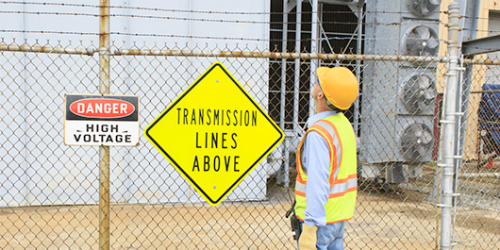- About Us
- Report an Incident
- Safety Management
-
- Aerosol Transmissible Disease
- Bloodborne Pathogens
- Asbestos Program
- Confined Spaces
- Construction Safety
- Control of Hazardous Energy
- County Safety Management Program
- Ergonomics Program
- Fall Protection
- Fleet Safety
- Hazard Communication Program
- Hearing Conservation
- Heat Illness Prevention
- Injury & Illness Prevention Program
- Lead Monitoring Program
- Personal Protective Equipment
- Respirator Protection Program
- Vector Borne Illness
- Forms
- Staff Assignments
- Website Accessibility Assistance
- Back to Workplace Safety
Electrical Safety

Our lifestyle is dependent on electricity. Without it, many things would not be possible. However, the improper use of electricity can be life-threatening. The human body is a good conductor of electricity, and contact can be a small dose which results in the unpleasant sensation of a mild electric shock, to a large dose which results in electrocution, i.e., death.
Cal-OSHA devotes a whole set of standards to Electrical Safety, low voltage or high voltage. The National Fire Protection Association (NFPA) publishes standards and codes for working with electricity in any situation (NFPA 70E). Work involving electrical systems must only be performed by someone well trained in the handling of electricity and electrical equipment.
The effects of electricity are present even when the work being performed is not electrical. Work should never be performed on live systems unless absolutely necessary and then proper precautions must be in place. When working on equipment that uses electricity for operation, the electricity must be disconnected. To prevent accidental re-energizing, the equipment is locked out and tagged to ensure worker safety.
Unfortunately, not all electricity is human generated. Storms can produce strong electric current. Electric storms can be spectacular but if a flash finds a ground it can cause serious damage from wildfire to death.
Some operations will generate another form of natural electricity, static electricity. Appropriate precautions must be taken to prevent electric shocks or other incidents relating from static electricity.
To get more information on the applicability of electrical safety programs for a specific County operation please contact the corresponding departmental Safety Coordinator.
For further information on specific regulatory guidelines please refer to the link(s) below:
Control of Hazardous Energy (Lockout/Tagout)
Electrical Safety Orders (Cal-OSHA)
Control of Hazardous Energy (Cal-OSHA General Industry Standards)
Static Electricity (Cal-OSHA)